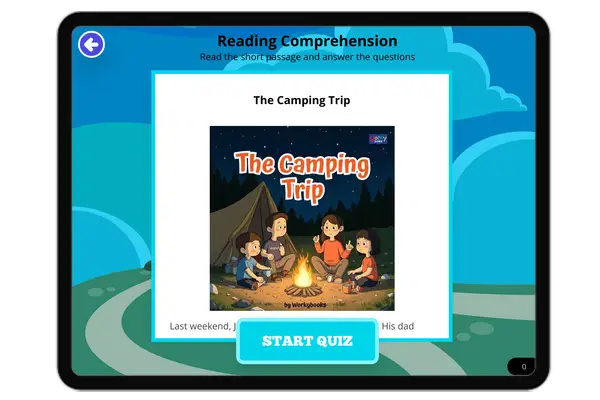Modal Auxiliary Verbs Worksheet
- 4
- 5
- L.4.1.C
This learning resource is available in interactive and printable formats. The interactive worksheet can be played online and assigned to students. The Printable PDF version can be downloaded and printed for completion by hand.
About the "Modal Auxiliary Verbs" Worksheet
Modal Auxiliary Verbs is a comprehensive worksheet designed to enhance students' understanding and application of modal verbs in English grammar. This interactive and printable worksheet begins with a concise explanation of modal auxiliaries and their various uses, including expressing ability, possibility, permission, obligation, and necessity. The worksheet then presents 12 multiple-choice questions spread across two pages, challenging learners to select the most appropriate modal verb for each given sentence.
This interactive and printable worksheet offers a diverse range of sentence contexts, allowing students to practice identifying and using modal verbs in various situations. From everyday scenarios to more complex linguistic structures, the exercises cover different aspects of modal verb usage. By completing these multiple-choice questions, learners can reinforce their grammar skills, improve their sentence comprehension abilities, and gain confidence in selecting the correct modal verbs for different contexts. The worksheet's format also encourages critical thinking as students must consider the nuances of each sentence to choose the most suitable modal auxiliary.
What will your child learn through this worksheet?
- Identification and correct usage of modal auxiliary verbs in different contexts
- Understanding the various functions of modal verbs (ability, possibility, permission, etc.)
- Distinguishing between similar modal verbs and their appropriate applications
- Interpreting sentence context to select the most suitable modal auxiliary
Learning Outcomes
Cognitive
- Correctly identify and choose the appropriate modal verb in at least 10 out of 12 sentences
- Demonstrate understanding of at least 4 different functions of modal auxiliaries (e.g., ability, possibility, permission, obligation)
Psychomotor
- Develop fine motor skills through circling the correct answers on the worksheet
- Improve visual discrimination skills by carefully reading and selecting from multiple-choice options
Affective
- Build confidence in using modal auxiliaries in everyday language
- Develop a positive attitude towards learning and applying English grammar rules
Interpersonal/Social
- Enhance ability to express ideas more precisely in social interactions using appropriate modal verbs
- Improve communication skills by understanding the subtleties conveyed by different modal auxiliaries
Tags
Modal auxiliaries, English grammar, multiple-choice questions, language learning, grammar exercises, verb usage, educational worksheet, English language skills
Common Core Standards Covered
Perfect For:
- • Classroom assignments
- • Auto-graded assessments
- • Printable handouts
- • Home learning support
- • Homework help
- • Skill reinforcement
- • Curriculum planning
- • Self-paced learning
- • Progress tracking








